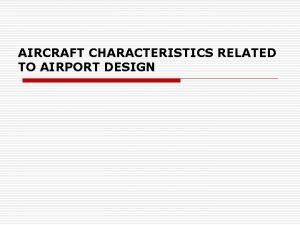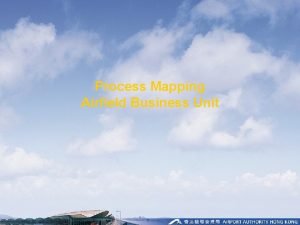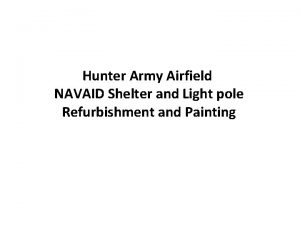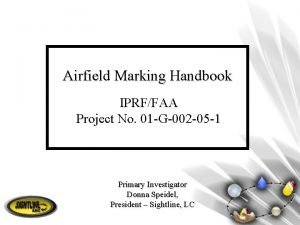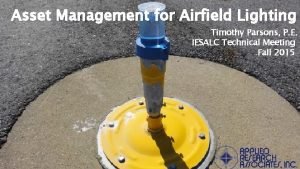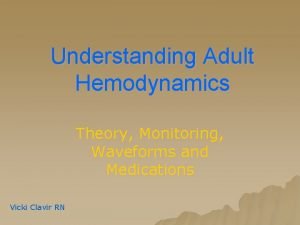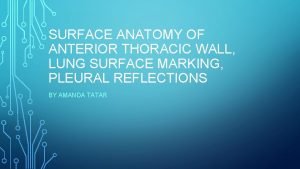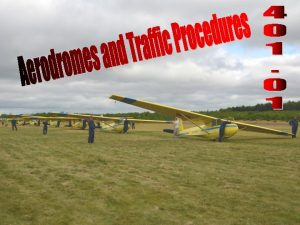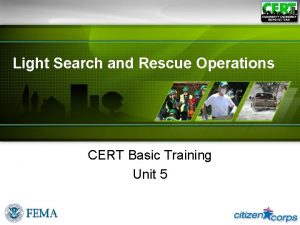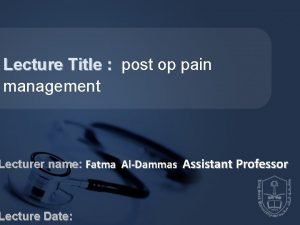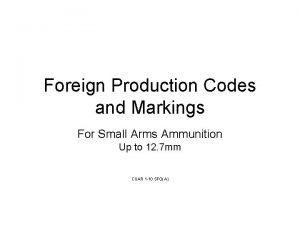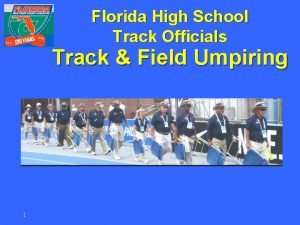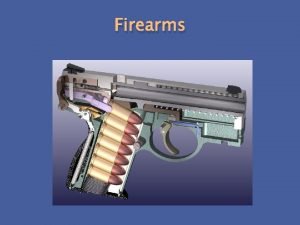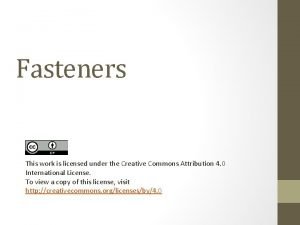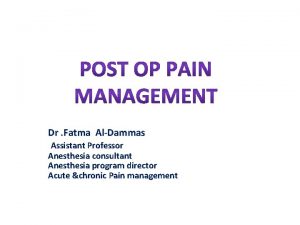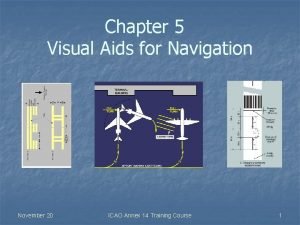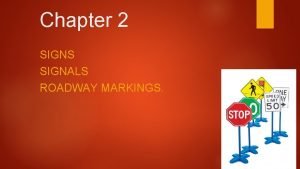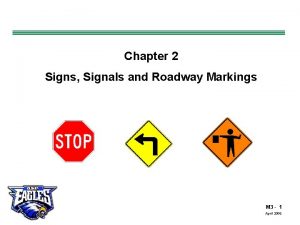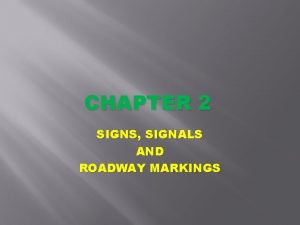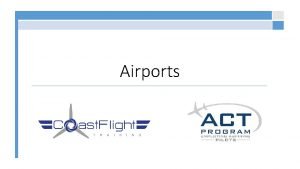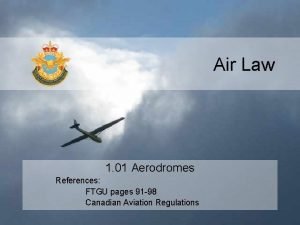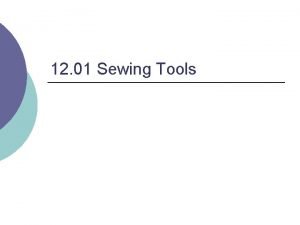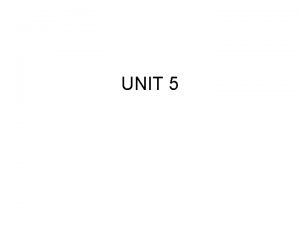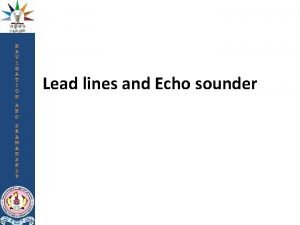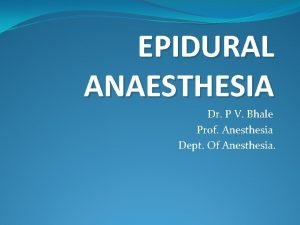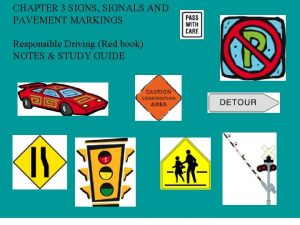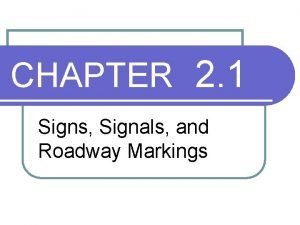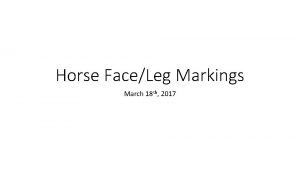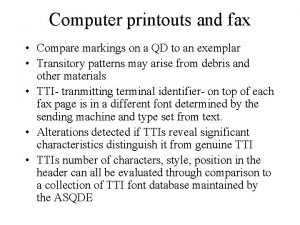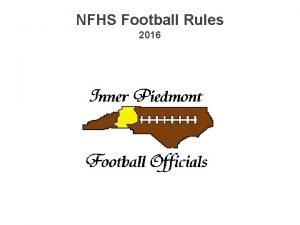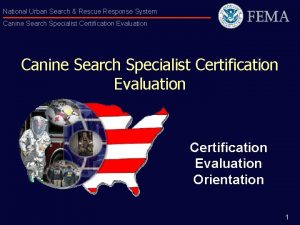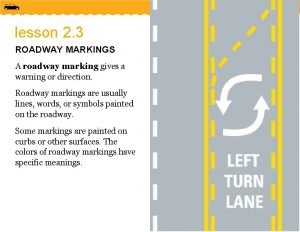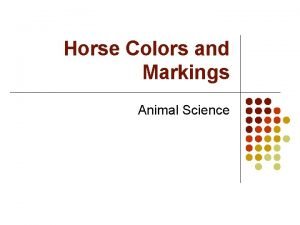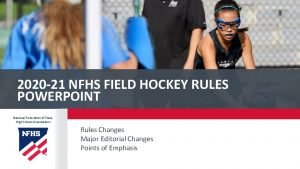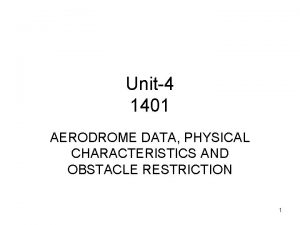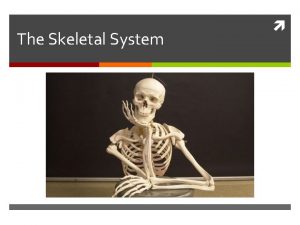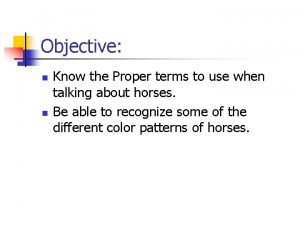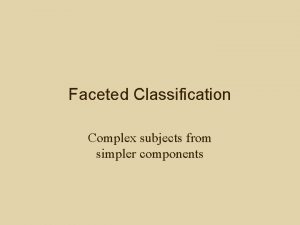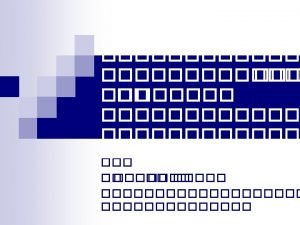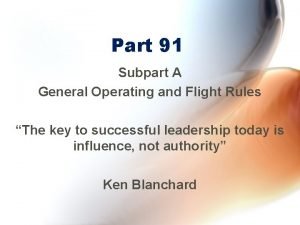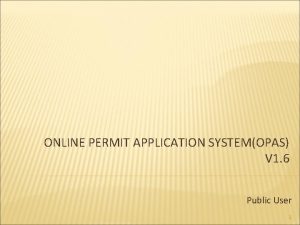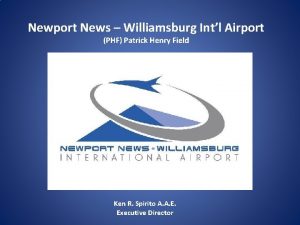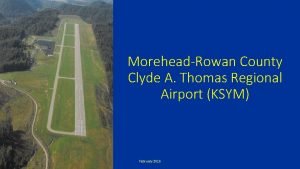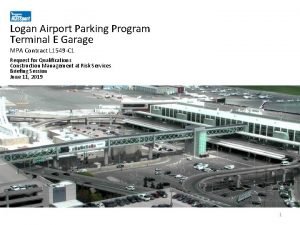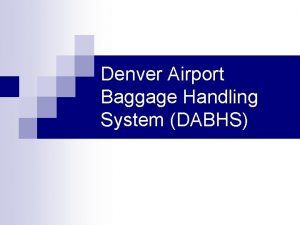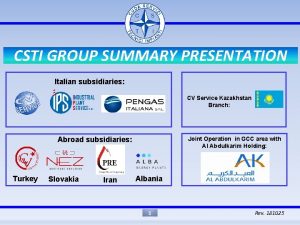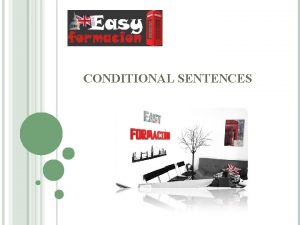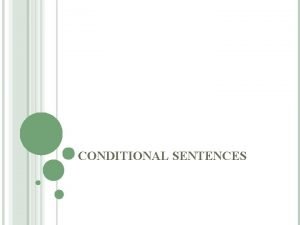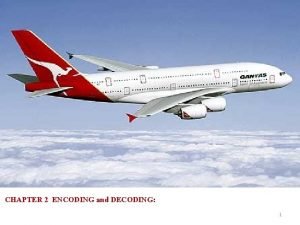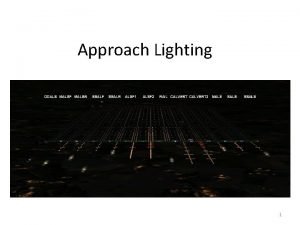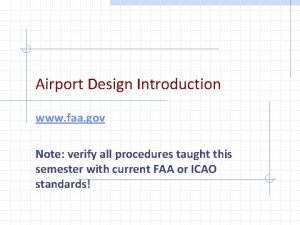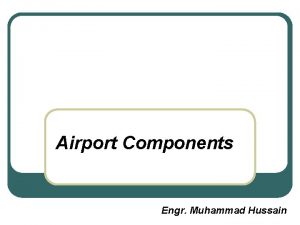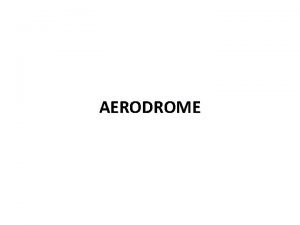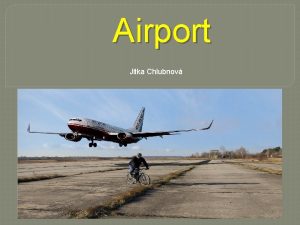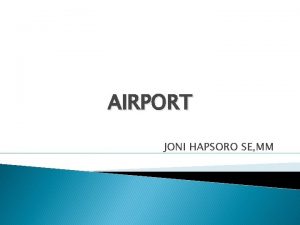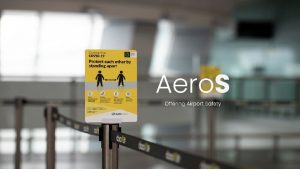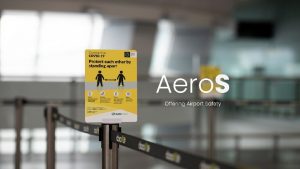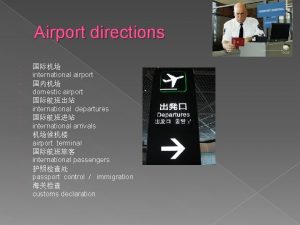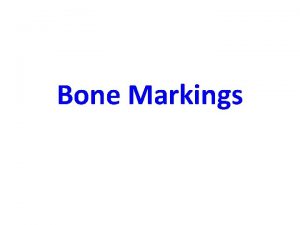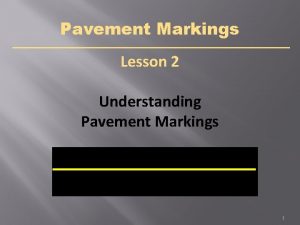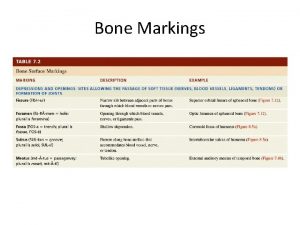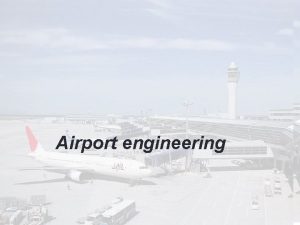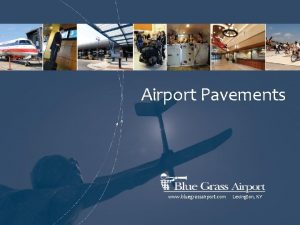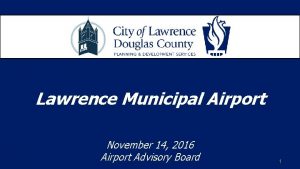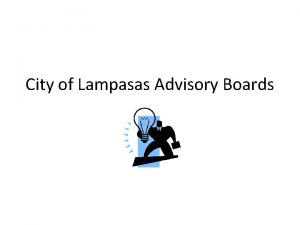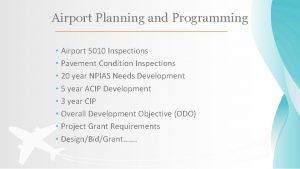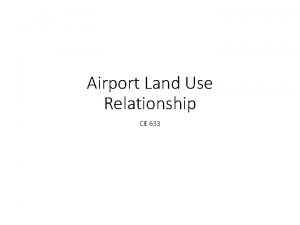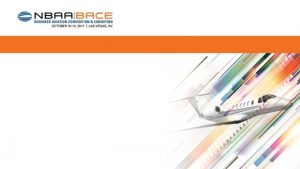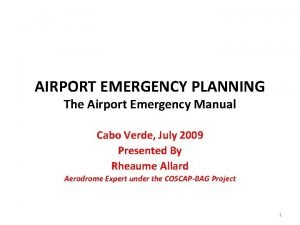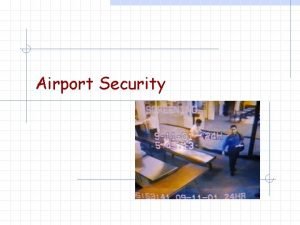Airfield Markings Changes to Advisory Circulars Airport Engineering
















































































- Slides: 80

Airfield Markings Changes to Advisory Circulars Airport Engineering Onsite Seminar October 14, 2019 Sightline, Inc. Airport Marking Consultants Culpeper, Virginia

Overview § How has the “What, Where, and When” of airfield markings changed in AC 150/5340 -1 M? § What are the quality control measures that have been added to AC 150/5370 -10 H, Item P-620 – Airfield and Taxiway Markings § What aspects of the P-620 could be applied to the maintenance of airfield markings? § What responsibilities do consulting engineers and their RPRs have to ensure their clients inherit markings that are effective and will last? § If markings are the “icing on the cake”, how can engineers make sure they will have the desired effect? 2

Changes to ACs • AC 150/5340 -1 M – 5/10/19 • AC 150/5370 -10 H – 12/21/18 (Item P-620 – Runway and Taxiway Markings) • Reasons for the changes: • Clarify guidance • Improve industry standards • Improve marking performance • Quality Control measures

AC 150/5340 -1 M May 10, 2019 • Centering of Runway Landing Designation Markings (Para. 2. 3. 5)

Footnotes on Numbers Q All characters are 60 -feet high and 20 -feet wide unless otherwise specified. Q Vertical stroke is 5 feet wide; horizontal stroke 10 ft. Q All designations are spaced 15 feet apart, with exception to the number “ 11” (27’). Q Single designations are centered on the runway pavement centerline. For double designations, the center of the outer edges of the two numerals is centered on the runway pavement centerline. 5

6

7

Center Runway Landing Designator Markings. 48 ft 64 ft

9

Center Runway Landing Designator Markings. 54 ft. 10

AC 150/5340 -1 M May 10, 2019 • No taxi islands – new definition – (Para 1. 2. 4)

Island. An unused paved or grassy area along a taxiway, between taxiways, between runways, or between a taxiway and a runway. Paved islands are clearly marked as unusable, either by painting or the use of artificial turf. For the purposes of this AC, certain islands are referred to as “No-taxi” islands. 12

Case 1 – To avoid taxiway excursions onto unpaved areas or paved areas not intended for use by providing pilots with visual cues to discern the edge of usable full-strength pavement. 13

Case 2 – To prevent runway incursions when terminal aprons are in close proximity to the runway by creating turning maneuvers with the use of no-taxi islands and reconfigured taxi routes. 14

Case 3 – To avoid runway incursions or wrong runway take-offs due to oversized entrance taxiway. 15

Case 3 16

Case 3 17

Case 4 – Intended to reduce incursions due to multi-entrance taxiways located on a single, expansive, paved area. BEFORE

Case 4 19

Case 4 – Obtain standard width taxiways by inserting green no-taxi islands and creating individual taxiway entrances. 20

AC 150/5340 -1 M May 10, 2019 • Recommends training of personnel who apply [or monitor] surface markings.

PILOT CERTIFICATE TRAINING AT DULLES INTERNATIONAL AIRPORT 22

4. Paragraph 1. 3. 8. The advisory circular makes the recommendation for training of personnel that perform [monitor] the application of surface markings, prepare surfaces to receive surface markings, remove markings, etc. , as important aspects to obtaining desired markings and longevity. 23

AC 150/5340 -1 M (continued) • Any stencils used must not leave stencil gaps (Para. 1. 3. 9)

Fill in stencil marks on surface painted signs

In all cases, inscriptions follow Appendix B inscription criteria. 26



AC 150/5340 -1 M (continued) • Added notes to Table 1 -1 and Table 1 -2 to clarify the use of black borders (Para. 1. 4)


Table 1 -1. General Guidelines for Painting a Black Border Pavement Surface Type Age of Pavement Surface Up to 2 Over 2 New years old Portland Cement Concrete Yes Yes Asphaltic Concrete No No Yes Asphalt Treated (Sealcoat) No No Yes

Note 1: Table 1 -1 and Table 1 -2 are interrelated. Surface markings per Table 1 -2 that require black borders may initially be deferred for the case of new, dark-colored asphalt concrete; new asphalt treated pavement surfaces for up to two years as per Table 1 -1. . New light-colored asphalt projects require the black borders upon completion. Note 2: Surface markings identified per Note 1 that sufficiently fade before 2 years shall receive black borders. 32

Black borders provide contrast to markings on light colored pavement for conspicuity during daylight hours. Glass beads provide conspicuity to markings during darkness. Both are necessary to improve situational awareness.

AC 150/5340 -1 M (continued) • Use of the Pattern B (ILS/MLS) Holding Position Marking for Precision Obstacle Free Zone (POFZ) or Runway Approach/ Departure areas of a runway.

35

36

New use of Pattern B (Ladder) Holding Position Marking at Departure/Approach ends. Comply by July 2020

AC 150/5340 -1 M (continued) • Modified enhanced taxiway centerline that are collinear with an on-center surface painted holding position sign.

AC 150/5340 -1 M 2 to 3 ft

AC 150/5340 -1 M (continued) • When a black border is not painted on a holding position marking, the taxiway edge marking stops 6 -inches away from the hold bar.

3 ft. 6 to 12 in. 6 in. 9 ft. 6 to 12 in. 3 ft. 3 to 6 in.

AC 150/5370 -10 H, Item P-620 Tailored Specifications Surface Preparation Good Inspection Quality Materials Quality Application 42

AC 150/5370 -10 H, 12/21/18 ü New Construction AC ü Specifications for asphalt, concrete, joints, sealants, etc. ü Item P-620 – Runway and Taxiway Markings – Guidance for HOW to apply markings 43

AC 150/5370 -10 H, Item P-620 Runway and Taxiway Markings Ø Materials to use Ø Equipment Ø Material usage Ø Application requirements Ø Quality control measures Ø Retro-reflectivity requirements The underlying theme with the New Construction AC (5370 -10 H) is quality, and the markings portion in the P-620 was no exception. 44

AC 150/5370 -10 H - P 620 Runway and Taxiway Markings 620 -2. 1 Materials acceptance. . All material shall arrive in sealed containers that are easily quantifiable for inspection by the RPR.

AC 150/5370 -10 H, P 620, Table 1 Paint Glass Beads Application Rate Type I, Gradation A 1 Type III Type IV 1 Maximum Minimum 115 ft 2/gal (2. 8 m 2/l) 7 lb/gal (0. 85 kg/l) 10 lb/gal (1. 2 kg/l) -- Waterborne Type III 90 ft 2/gal (2. 2 m 2/l) 7 lb/gal (0. 85 kg/l) 8 lb/gal (1. 0 kg/l) Waterborne Type III 55 ft 2/gal (1. 4 m 2/l) 6 lb/gal (. 8 kg/l) 5 lb/gal (. 7 kg/l) Solvent Base 115 ft 2/gal (2. 8 m 2/l) 7 lb/gal (0. 85 kg/l) 10 lb/gal (1. 2 kg/l) -- Solvent Base 55 ft 2/gal (2. 2 m 2/l) -- -- 5 lb/gal (. 7 kg/l) Epoxy 90 ft 2/gal (2. 2 m 2/l) 15 lb/gal (1. 8 kg/l) 20 lb/gal (2. 4 kg/l) 16 lb/gal (1. 9 kg/l) Methacrylate 45 ft 2/gal (1. 1 m 2/l) 15 lb/gal (1. 8 kg/l) 20 lb/gal (2. 4 kg/l) 16 lb/gal (1. 9 kg/l) Methacrylate Splatter. Profile 24 ft 2/gal. (0. 6 m 2/l) 8 lb/gal. (0. 1 kg/l) 10 lb/gal. (1. 2 kg/l) 10 lb/gal (1. 2 kg/l) 230 ft 2/gal (5. 6 m 2/l) No beads Type Waterborne Type I or II [III] Temporary Marking Waterborne Type I or II [III]

AC 150/5370 -10 H - P 620 Runway and Taxiway Markings 620 -2. 2 – Marking materials. . CAUTION: Prior to reopening pavements at Part 139 airports verify that all markings comply with Part 139 requirements. Temporary markings not in compliance with AC 150/5340 -1 will require a NOTAM regarding any nonstandard marking be issued. For example, temporary markings without beads.

AC 150/5370 -10 H - P 620 Runway and Taxiway Markings 620 -2. 2 – Marking materials. Retroreflectivity shall be measured. . . according to ASTM E 1710 and the practices in ASTM D 7585 . . . for a portable retro-reflectometer and computing measurement averages. A vehiclemounted retroreflectometer may also be used.

Retro-reflectometers Stripemaster II Mirolux 30 Delta Optics LTL-X 49

50

Minimum Retro-reflectance Values Material 1 Retro-reflectance mcd/m 2/lux White Yellow Red Initial Type I 300 175 35 Initial Type III 600 35 Initial Thermoplastic 225 100 35 All materials, remark when less than 1 100 75 10 Prior to remarking, determine if removal of contaminants on markings will restore retro-reflectance.

52

53

54

AC 150/5370 -10 H - P 620 Runway and Taxiway Markings 620 -2. 2 – Marking materials. b. Reflective media. Glass beads for red and pink paint shall meet the requirements for [Type I, Gradation A] [ Type IV, Gradation A]. (Should be Gradation B)

NOTE: Suggested performance at installation. Wait at least 24 hours to evaluate reflectivity. 60 0 750 600 300 40 150 35 0 30 25 20 15 10 5 0 300 450 Type I Gradation A 0 0 3 5 17 1016 889 762 635 508 381 254 127 0 Type III Low Index High Index (1. 5 IOR) (1. 9 IOR) Recycled Glass Virgin Materials Type IV Gradation B Type IV Gradation A Low Index (1. 5 IOR) Direct Melt microns mils retrorefectivity (mcd) 900

AC 150/5370 -10 H - P 620 Runway and Taxiway Markings Released December 21, 2018 620 -3. 1 – Weather Limitations Markings shall not be applied when weather conditions are forecast to not be within the manufacturer’s recommendations for application and dry time. [cure time] This could be applied to marking maintenance.

AC 150/5370 -10 H - P 620 Runway and Taxiway Markings 620 -3. 2 – Equipment The mechanical marker shall be an atomizing spraytype or airless type marking machine with automatic glass bead dispensers suitable for application of traffic paint. It shall produce an even and uniform film thickness and appearance of both paint and glass beads at the required coverage and shall apply markings of uniform cross-sections and clear-cut edges without running or spattering and without over spray. The marking equipment for both paint and beads shall be calibrated daily. This could be applied to marking maintenance.

59

60

61

AC 150/5370 -10 H - P 620 Runway and Taxiway Markings 620 -3. 3(a) – Surface Preparation = Clean new pavements a. Preparation of new pavement surfaces. The area to be painted shall be cleaned by broom, blower, water blasting, or by other methods approved by the RPR to remove all contaminants, including PCC curing compounds, minimizing damage to the pavement surface. This would not be applied to marking maintenance.

AC 150/5370 -10 H - P 620 Runway and Taxiway Markings 620 -3. 3(b) – Surface Preparation = Paint Removal b. Preparation of pavement to remove existing markings. Existing pavement markings shall be removed by rotary grinding, water blasting, or by other methods approved by the RPR minimizing damage to the pavement surface. The removal area may need to be larger than the area of the markings to eliminate ghost markings. After removal of markings on asphalt pavements, apply a fog seal or seal coat to ‘block out’ the removal area to eliminate ‘ghost’ markings.

Para 1. 3(f) The physical removal of any old marking(s) must include a pre-determined larger size and shape of a removal area that encompasses the old marking(s).

AC 150/5370 -10 H - P 620 Runway and Taxiway Markings 620 -3. 3(b) – Surface Preparation = Paint Removal b. Preparation of pavement to remove existing markings. Existing pavement markings shall be removed by rotary grinding, water blasting, or by other methods approved by the RPR minimizing damage to the pavement surface. The removal area may need to be larger than the area of the markings to eliminate ghost markings. After removal of markings on asphalt pavements, apply a fog seal or seal coat to ‘block out’ the removal area to eliminate ‘ghost’ markings.

66

AC 150/5370 -10 H - P 620 Runway and Taxiway Markings 620 -3. 3(c) – Surface Preparation = Before repainting c. Preparation of pavement markings prior to remarking. Prior to remarking existing markings, loose, existing markings must be removed minimizing damage to the pavement surface, with a method as approved by the RPR. After removal, the surface shall be cleaned of all residue or debris.

Loose and poorly bonded material was removed by waterblasting. No surface preparation has taken place This could be applied to marking maintenance. 68

AC 150/5370 -10 H - P 620 Runway and Taxiway Markings 620 -3. 5 – Application Different bead types shall not be mixed. Regular monitoring of glass bead embedment and distribution should be performed. This could be applied to marking maintenance.

70

71

AC 150/5370 -10 H - P 620 Runway and Taxiway Markings 620 -3. 7 – Control Strip Prior to the full application of airfield markings, the Contractor shall prepare a control strip in the presence of the RPR. The Contractor shall demonstrate the surface preparation method and all striping equipment to be used on the project. The marking equipment must achieve the prescribed application rate of paint and population of glass beads (per Table 1) that are properly embedded and evenly distributed across the full width of the marking. Prior to acceptance of the control strip, markings must be evaluated during darkness to ensure a uniform appearance. This could be applied to marking maintenance.

73

Calibrated Control Strip – Inspect during darkness 74

This is the icing on the cake 75

AC 150/5370 -10 H - P 620 Runway and Taxiway Markings 620 -3. 8 – Retro-Reflectance shall be measured. . . The average shall be equal to or above the minimum levels of all readings which are within 30% of each other. This could be applied to marking maintenance.

180 303 380 Average = 1404/6 = 234 x. 30 = 70 234 + 35 = 269 234 – 35 = 199 185 170 186 77

AC 150/5370 -10 H - P 620 Runway and Taxiway Markings METHOD OF MEASUREMENT 620 -4. 1 a The quantity of surface preparation shall be measured by [the number of square feet for each type of surface preparation specified in paragraph 620 -3. 3 ] [ lump sum ] 620 -4. 1 b The quantity of markings. . . 620 -4. 1 c The quantity of reflective media. . . 620 -4. 1 d The quantity of temporary markings. . . 620 -4. 1 e The quantity of preformed markings. . .

AC 150/5370 -10 H – P 101 Preparation/Removal of Existing Pavements 101 -3. 3 Removal of paint and rubber prior to [overlay][seal coat]. All paint and rubber over 1 foot wide that will affect the bond of the new [overlay][seal coat] shall be removed from the surface of the existing pavement.

Quality built into markings = dollar savings Tailored Specifications Surface Preparation Good Inspection Quality Materials Quality Application 80
 Aircraft length
Aircraft length Small intestine mechanical digestion
Small intestine mechanical digestion Greg ricker
Greg ricker She had fainted but we managed to
She had fainted but we managed to Ac 150/5340-18
Ac 150/5340-18 Airport lighting cans
Airport lighting cans Airfield
Airfield Navaid burney
Navaid burney Airport marking removal
Airport marking removal Rust airfield radiation
Rust airfield radiation Changes in latitudes, changes in attitudes meaning
Changes in latitudes, changes in attitudes meaning Sample of chemical changes
Sample of chemical changes Swan-ganz catheter cm markings
Swan-ganz catheter cm markings Used to transfer marks from the pattern to the fabrics
Used to transfer marks from the pattern to the fabrics Jugular notch
Jugular notch No parking zones are often near
No parking zones are often near Touchdown zone markings
Touchdown zone markings Ibc un markings
Ibc un markings Light search and rescue
Light search and rescue Blood patch
Blood patch вуфл
вуфл 4x100 relay exchange zone markings
4x100 relay exchange zone markings Barrel markings
Barrel markings Left hand thread bolt markings
Left hand thread bolt markings Epidural catheter markings measurement
Epidural catheter markings measurement Aircraft stand markings
Aircraft stand markings Six types of roadway markings
Six types of roadway markings Chapter 2 signs, signals, and roadway markings
Chapter 2 signs, signals, and roadway markings Traffic sign color meanings
Traffic sign color meanings What are the 6 types of special roadway markings
What are the 6 types of special roadway markings Vertical
Vertical What is a displaced threshold on a runway
What is a displaced threshold on a runway Light signals aviation
Light signals aviation Waxy coated paper which transfers pattern markings
Waxy coated paper which transfers pattern markings Landing t
Landing t Rsen classification
Rsen classification Crosshatch markings culinary
Crosshatch markings culinary Hand lead line markings
Hand lead line markings Rimfire vs centerfire
Rimfire vs centerfire Epidural anesthesia medications
Epidural anesthesia medications Guide and international signs
Guide and international signs Chapter 2 signs signals and roadway markings answer key
Chapter 2 signs signals and roadway markings answer key Snip horse face marking
Snip horse face marking Faxcompare
Faxcompare Decorative markings in the end zone
Decorative markings in the end zone Urban search and rescue markings
Urban search and rescue markings Manute bol face markings
Manute bol face markings Red raised roadway markers
Red raised roadway markers Horse colors and markings
Horse colors and markings Hockey player equipment
Hockey player equipment Xeomin reconstitution chart
Xeomin reconstitution chart Aerodrome physical characteristics
Aerodrome physical characteristics Bone markings
Bone markings Horse leg markings
Horse leg markings Classification of structures
Classification of structures A short section of corrugated roadway that warns of hazards
A short section of corrugated roadway that warns of hazards Enplaining curb
Enplaining curb Suvarnabhumi international airport map
Suvarnabhumi international airport map Use case
Use case Vfr weather minimums
Vfr weather minimums Extranetapps hongkongairport com
Extranetapps hongkongairport com Novotel 1 sierpnia warszawa
Novotel 1 sierpnia warszawa Patrick henry international airport
Patrick henry international airport Ksym airport
Ksym airport Logan airport terminal e parking
Logan airport terminal e parking Sabiha gökçen international airport earthquake proof
Sabiha gökçen international airport earthquake proof Ndb service volumes
Ndb service volumes Dia baggage system
Dia baggage system Italy airport
Italy airport If you ask him he (take) you to the airport
If you ask him he (take) you to the airport Finish these sentences
Finish these sentences Encode decode airport codes
Encode decode airport codes Arabian adventures abu dhabi
Arabian adventures abu dhabi Ssalr vs malsr
Ssalr vs malsr Overview of airport operations
Overview of airport operations Landside and airside of airport
Landside and airside of airport Airport components
Airport components Vvv airport code india
Vvv airport code india Hans full is pulling on a rope to drag
Hans full is pulling on a rope to drag Rmit airport pickup
Rmit airport pickup Munich airport car parking
Munich airport car parking
